Abstract
The existence of the P beta' phase in certain lipid bilayers is evidence that molecular interactions between lipids are capable of producing unusual large-scale structures at or near biological conditions. The problem of identifying the specific intermolecular interactions responsible for the structures requires construction of theoretical models capable of clear predictions of the observable consequences of postulated intermolecular interactions. To this end we have carried out a twofold modeling effort aimed at understanding the ripple phase. First, we have performed detailed numerical calculations of potential energies of interaction between pairs and triplets of lipid molecules having different chain tilt angles and relative vertical alignments. The calculations support the notion that chain tilting in the gel phase is a result of successive 3-5-A displacements of neighboring molecules perpendicular to the bilayer plane rather than long-range cooperative chain tilting. Secondly, we have used these results as a guide to formulate a new lattice model for lipid bilayer condensed phases. The new model is less complex than our earlier model and it includes interactions which are, based on the energy calculations, more likely to be responsible for the ripple phase. In a certain limit the model maps onto the chiral clock model, a model of much interest in condensed matter theory. In this limit the model exhibits a chain-tilted ordered phase followed by (as temperature increases) a modulated phase followed by a disordered phase. Within this limit we discuss the properties of the model and compare structures of the modulated phase exhibited by the model with experimental data for the P beta' phase in lipid bilayers.
Full text
PDF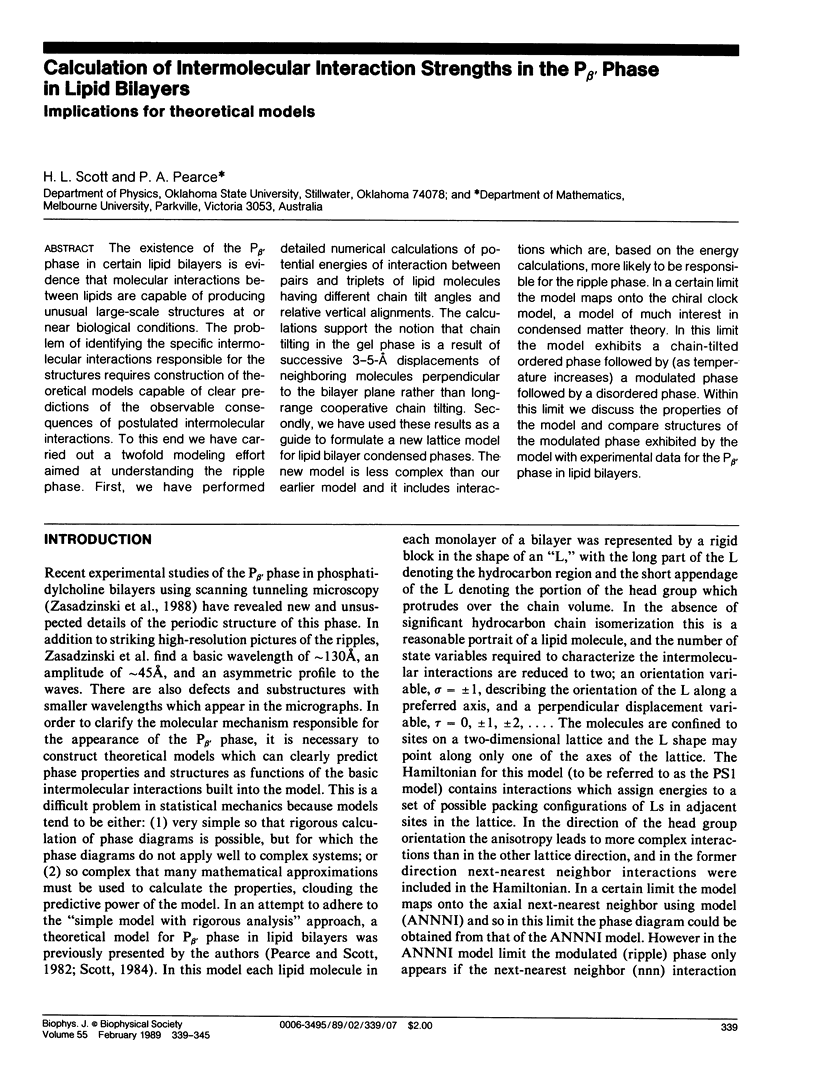
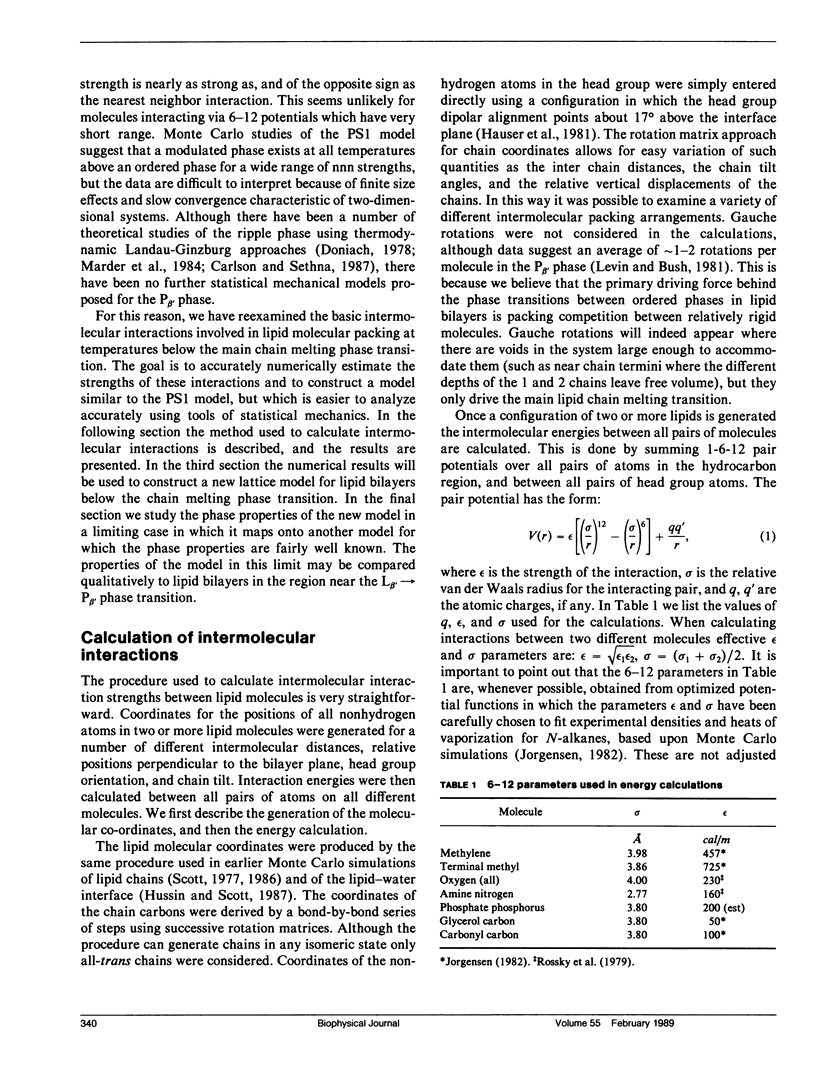
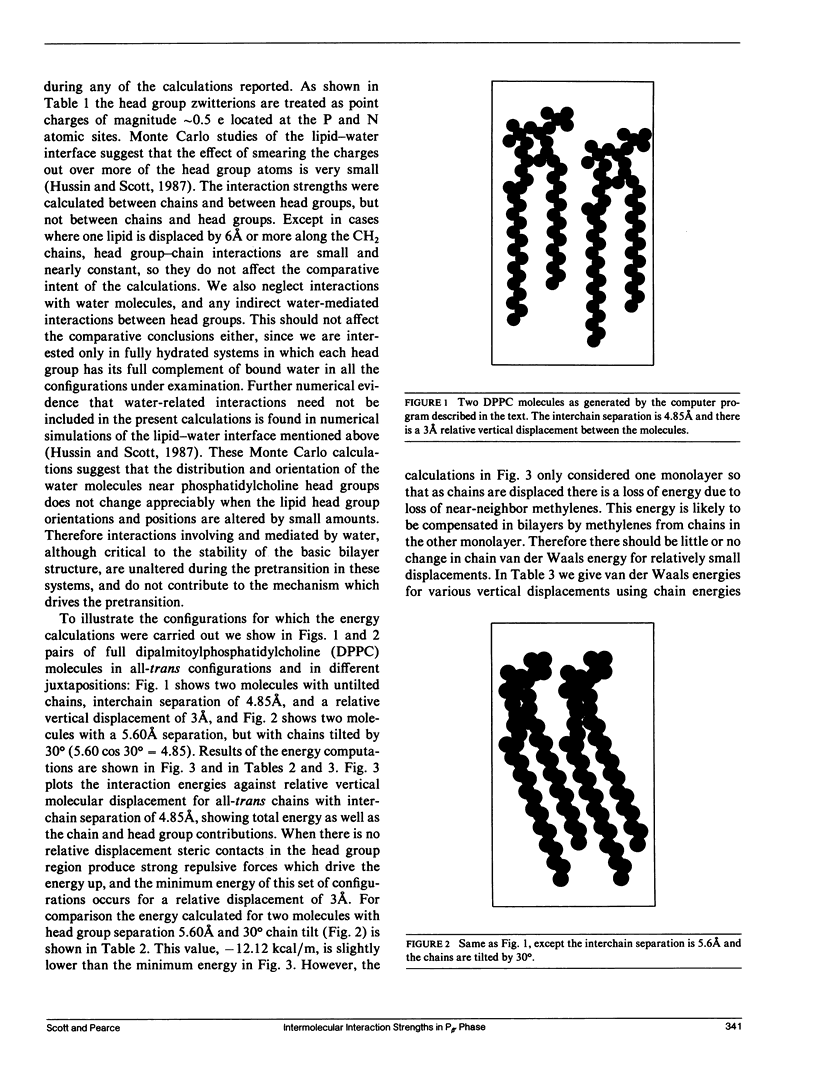
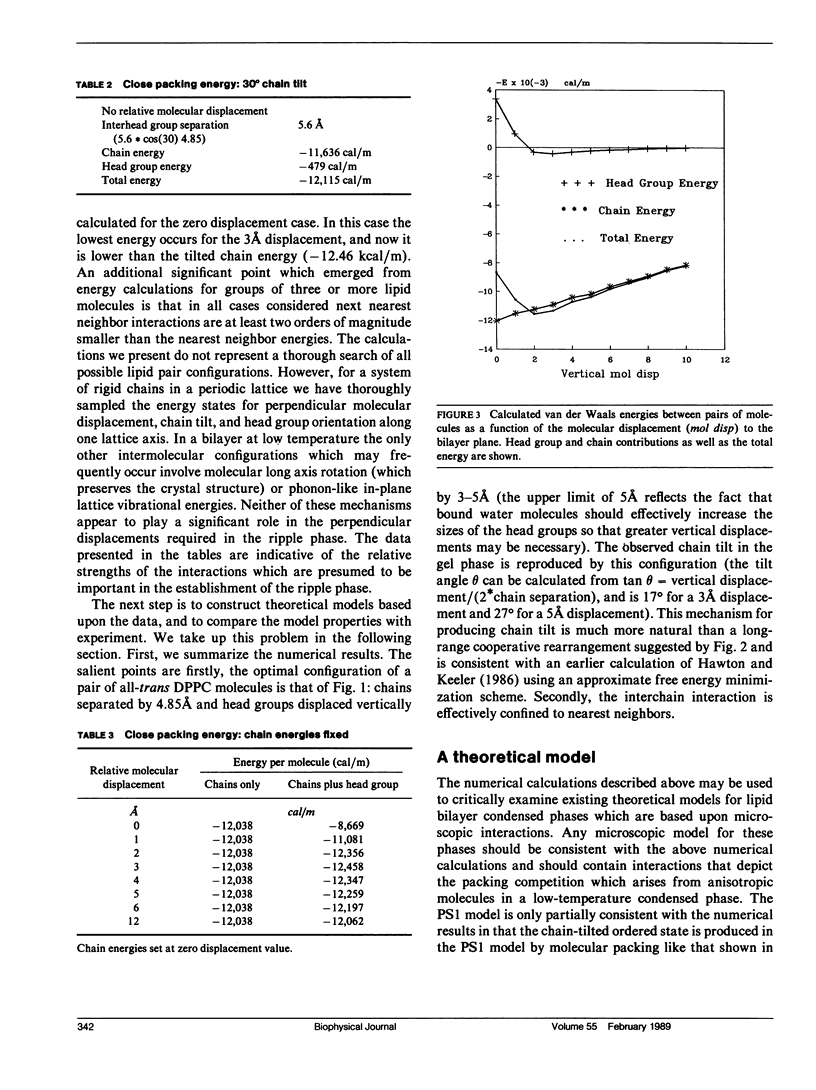
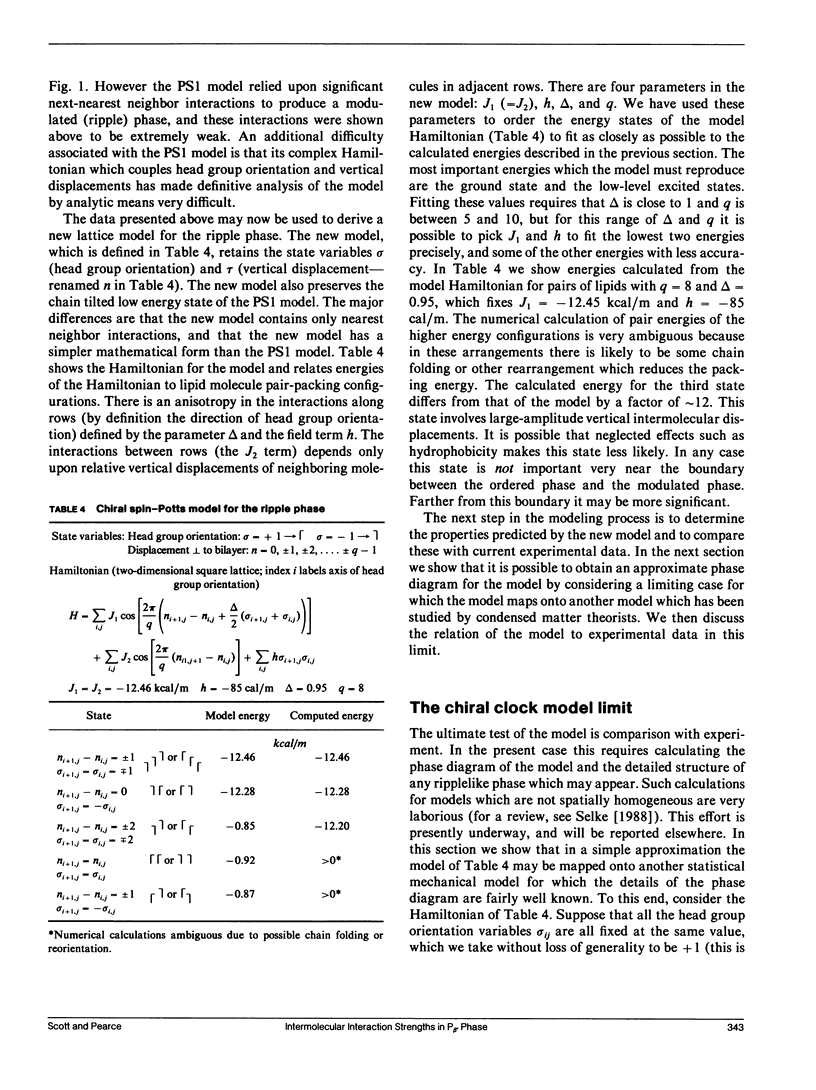
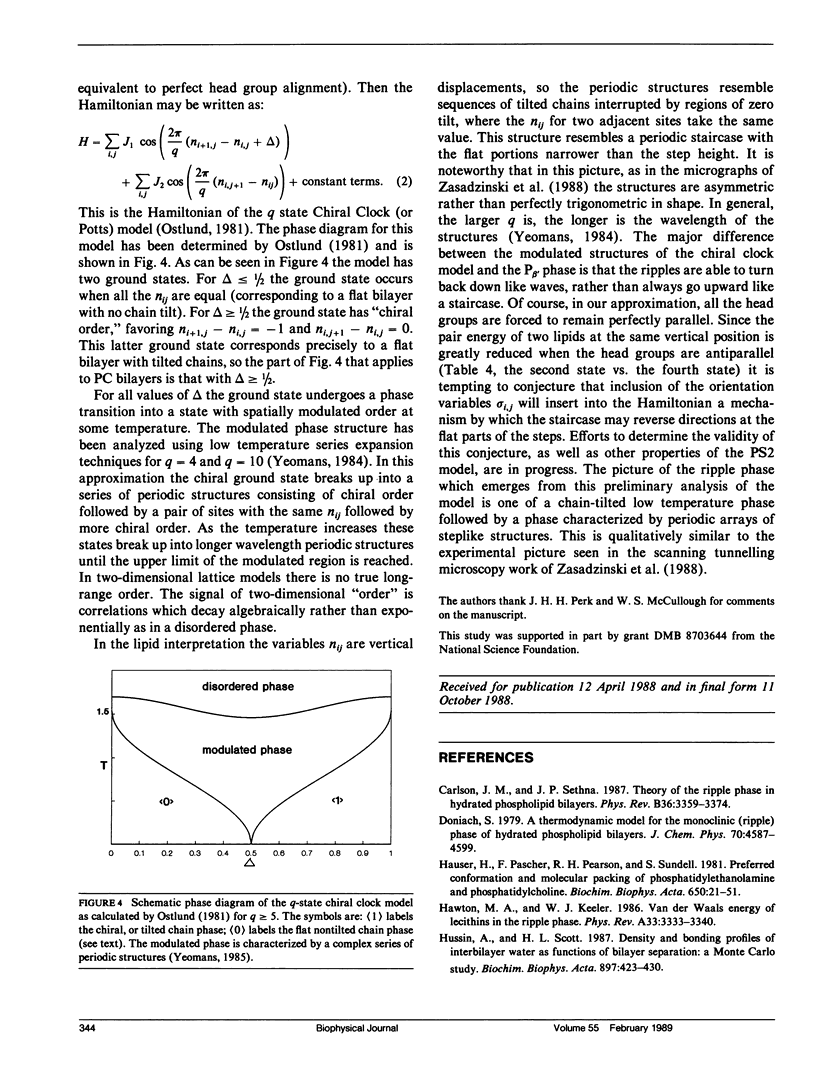
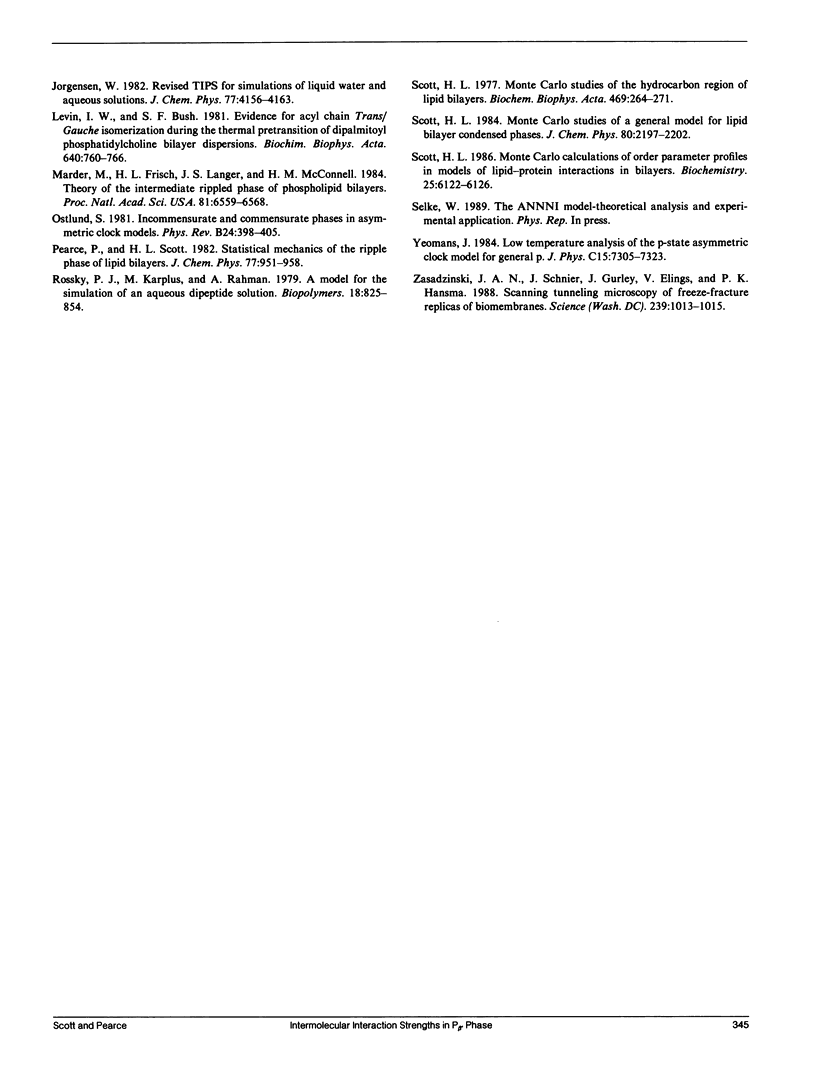
Selected References
These references are in PubMed. This may not be the complete list of references from this article.
- Carlson JM, Sethna JP. Theory of the ripple phase in hydrated phospholipid bilayers. Phys Rev A Gen Phys. 1987 Oct 1;36(7):3359–3374. doi: 10.1103/physreva.36.3359. [DOI] [PubMed] [Google Scholar]
- Hauser H., Pascher I., Pearson R. H., Sundell S. Preferred conformation and molecular packing of phosphatidylethanolamine and phosphatidylcholine. Biochim Biophys Acta. 1981 Jun 16;650(1):21–51. doi: 10.1016/0304-4157(81)90007-1. [DOI] [PubMed] [Google Scholar]
- Hawton MH, Keeler WJ. van der Waals energy of lecithins in the ripple phase. Phys Rev A Gen Phys. 1986 May;33(5):3333–3340. doi: 10.1103/physreva.33.3333. [DOI] [PubMed] [Google Scholar]
- Levin I. W., Bush S. F. Evidence for acyl chain trans/gauche isomerization during the thermal pretransition of dipalmitoyl phosphatidylcholine bilayer dispersions. Biochim Biophys Acta. 1981 Feb 6;640(3):760–766. doi: 10.1016/0005-2736(81)90106-1. [DOI] [PubMed] [Google Scholar]
- Marder M., Frisch H. L., Langer J. S., McConnell H. M. Theory of the intermediate rippled phase of phospholipid bilayers. Proc Natl Acad Sci U S A. 1984 Oct;81(20):6559–6561. doi: 10.1073/pnas.81.20.6559. [DOI] [PMC free article] [PubMed] [Google Scholar]
- Scott H. L., Jr Monte Carlo studies of the hydrocarbon region of lipid bilayers. Biochim Biophys Acta. 1977 Sep 19;469(3):264–271. doi: 10.1016/0005-2736(77)90162-6. [DOI] [PubMed] [Google Scholar]
- Scott H. L. Monte Carlo calculations of order parameter profiles in models of lipid-protein interactions in bilayers. Biochemistry. 1986 Oct 7;25(20):6122–6126. doi: 10.1021/bi00368a043. [DOI] [PubMed] [Google Scholar]
- Zasadzinski J. A., Schneir J., Gurley J., Elings V., Hansma P. K. Scanning tunneling microscopy of freeze-fracture replicas of biomembranes. Science. 1988 Feb 26;239(4843):1013–1015. doi: 10.1126/science.3344420. [DOI] [PubMed] [Google Scholar]


